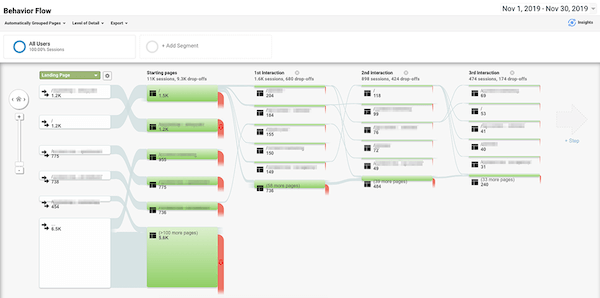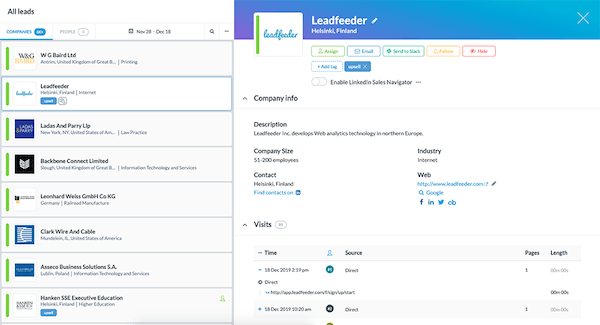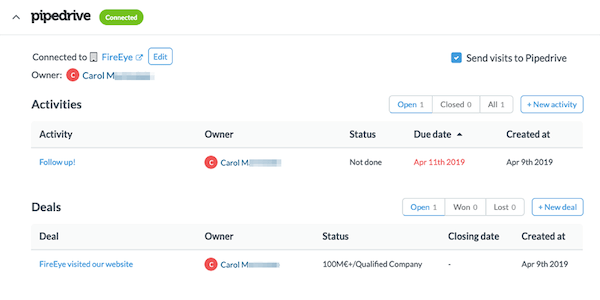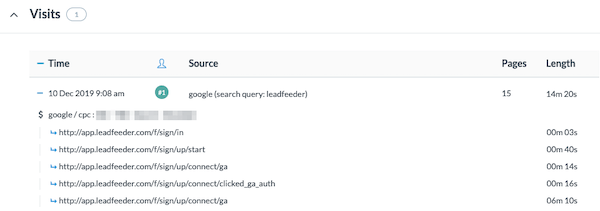Judging by much of the content out there on website lead generation, you’d think all it takes to bring in tons of new leads is to implement a few basic best practices and head off to the races. But the truth is that optimizing your website for lead generation is an ongoing process—there are always steps you can take to bring in more leads.
That’s why we’re covering website lead generation best practices that help experienced marketers take the next step in optimizing their website for lead generation. In this article, we share 6 best practices you can implement (including how website visitor identification software can help you get more leads from your website, too).
Note: Ready to get more leads from your website? Sign up and try Leadfeeder free for 14 days to get access to the companies that visit your website.
Website Lead Generation Best Practices
A website is one of the most powerful tools most marketers have when it comes to generating leads, and there are a few reasons for that:
All roads (from email to social to display ads) typically lead potential new leads back to your website
You own your website—meaning you aren’t subject to the whims of social media platforms or search engines
When someone visits your website, there are more levers you can pull to get them to convert (content marketing, retargeting ads, email marketing, lead nurturing, etc.)
As a seasoned marketer, you’ve probably already implemented all the basic best practices for getting inbound leads from your website. So your goal now is to:
Generate more leads
Generate more qualified leads
The 6 best practices below will help you do both of those things. The tips below work because, by setting the right expectations from the start and further tailoring the website to your ideal audience, you can strategically and reliably convert more leads.
1. Map Your Ideal Customer Journey and Website Flow
When a website visitor hits your homepage, they usually have to take some kind of action in order to convert and become a lead—but it’s harder for visitors to do that if you don’t have a clear next step in mind when you build the page.
To move more web visitors through your website and, ultimately, to lead conversion, you need to have a clear, set path for them to follow through the site. That means every page of your website has to correspond to the ideal customer journey you want visitors and leads to follow.
Your website lead generation efforts start and end with that path, meaning every web page you create has to serve as a specific stepping stone toward conversion—and every aspect of that page should build on the step before it and toward the next step.

Google Analytics Behavior Flow
One way to approach this is to look at the Google Analytics Behavior Flow and filter for website visitors who become your best leads and best customers. It will show you which pages they visited along the way and help you identify where in the journey potential leads (who didn’t convert) fall off.
You can also see this information on a company-by-company basis by using Leadfeeder and looking into the ‘Visit’ details for your best accounts.

See Visit details in Leadfeeder—for each company that visits your website.
2. Build One Landing Page for One Buyer Persona
Far and away, one of the biggest mistakes marketers make with their websites is trying to use the same content to appeal to different segments of their customer base. If you create a landing page designed to convert all of your buyer personas, chances are, it’s less effective than it should be on every count.
The better choice is to create multiple landing pages—one for each of your buyer personas.
Let’s say you need to create a landing page for a new feature your company’s launching. You’d create one landing page that speaks to the pain points of your audience in the eCommerce industry, for example, and another landing page for your visitors in the SaaS space. Or, you’d create one landing page for end-users looking into your product and a separate landing page for their managers.
When you break out separate landing pages in that way, you can afford to get even more targeted and effective, with everything from the copy on the page to the ads and channels that send website traffic there. And that brings in both more (quantity) and more qualified (quality) leads.
3. Send a Consistent Message Across Your Digital Presence
When the message you’re sending to website visitors and, more broadly, your target audience as a whole isn’t consistent, it creates a mismatch in their expectations. When your website doesn’t do or say what visitors expect it to, that leads to:
High exit rate
Low conversion rate
A generally poor user experience for visitors
Issues like that are less than ideal in and of themselves—not to mention that things like high exit rates, high bounce rates, and low session durations can also negatively affect other things. For example, poor user behavior on your landing pages can affect your ability to bid successfully for keywords in Google Ads and get traffic. According to Google, “the experience you offer affects your Ad Rank and therefore your CPC and position in the ad auction.”
The solution to this one is simple, though: Ensure everything that leads visitors to a given page of your website sends the same message and sets the same expectations (which your website meets). That includes:
Your ad copy—on paid social media ads, display PPC ads, Google Ads, etc.
Your SEO (search engine optimization) meta title and meta description
Social media copy (organic posts)
All of these should use the same language as the copy on your website’s landing page (and the next pages the user will land on when they continue to engage with your website).
4. Get Your Capture Form Right
It’s pretty common knowledge that if you want to convert website traffic into leads, you need to have some kind of capture form included in your website design—that’s marketing 101. But to bring in more, better qualified leads, you need to take it a step further and optimize your capture form for your unique audience and your business.
What does that mean? A few things:
You need to offer something your audience deems valuable in exchange for their information. Content that helps them solve a problem, for example, or a 30-minute consultation call.
You need to balance the type and amount of information you ask for (like phone numbers and other contact information, for example) with that perceived value. The more value visitors expect to get from you, the more information they’ll be willing to hand over.
You need to tailor the information you ask for toward.
In addition to those conversion optimization activities, optimizing your form’s CTA and submit buttons also falls under this best practice. Everything from the color, placement, web design, and copy can be A/B tested to find the best combination.
5. Use Retargeting to Capture Companies Who Didn’t Convert
No matter how consistent and compelling your website is, there will always be visitors who fit the persona of your best leads but don’t convert—that’s the reality of digital marketing and website lead generation.
That doesn’t mean you let those potential customers disappear into the ether, of course. And one of the best ways to turn those visitors into leads after all is to use retargeting ads.
However, most retargeting ads only target one individual, and that doesn’t work for B2B marketers. Instead, you need to find tools that allow you to target retargeting ads to an entire company.
You can do that, for example, by using website visitor identification software along with some retargeting tools that focus on B2B. In that case, when someone visits your website, you can identify the company they work and then show ads to everyone else who works there.
(For more details on that, read our post on using Leadfeeder and Metadata.io for account-based retargeting.)
6. Use Visitor Identification Software to Turn More Website Visitors Into Leads
As we mentioned above, there are always people who visit your website and don’t convert—in fact, that’s up to 98% of visitors for the average SaaS company. And when those visitors are a good fit for your business, you don’t want to let them disappear.
That’s where visitor identification software like Leadfeeder comes into play.
With Leadfeeder, you can:
See the companies that visit your website, plus company and behavioral details.

Integrate with your CRM to see if a company is already in your CRM as a lead or not.

Monitor how your retargeting (and other) campaigns drive companies back to your site—including whether they lead the same person or additional people in the company.

Note: Ready to get more leads from your website? Sign up and try Leadfeeder free for 14 days to get access to the companies that visit your website.
Generate More, Better Website Leads
Seasoned B2B marketers know that generating quality website leads is about more than throwing up a landing page and a generic capture form. With the large majority of website visits ending without a conversion, there’s always something more you can do to get more qualified companies to convert into leads. With the best practices above, you can take that next step and start generating more and more qualified website leads.
More leads, no forms.
Sounds too good to be true? It’s not. Identify companies already visiting your website and turn them into qualified leads to fuel your sales pipeline.
Show me how





